It had been ages since I last fished Bysing Wood. A trip to Australia, social events, illness to the in-laws (both of them), plus unforeseen disasters, had kept me ‘confined to barracks’; now, having completed my work-party I was at last able to get out and have a go.
We are only allowed to fish during the afternoon on Sundays in the club at the moment (the morning given over to work around the lake for members wishing to fish the ‘Close Season’) and when I arrived there was only one other member in residence. The thing was where to start? I hadn’t seen the water in months much less fished it and hadn’t a clue as to the whereabouts of the fish. However, knowledge of the water and an appraisal of the conditions indicated the area of the ‘Knicker Island Bar’ to be the place – the breeze was blowing straight in there and I knew the area would be a good bet.
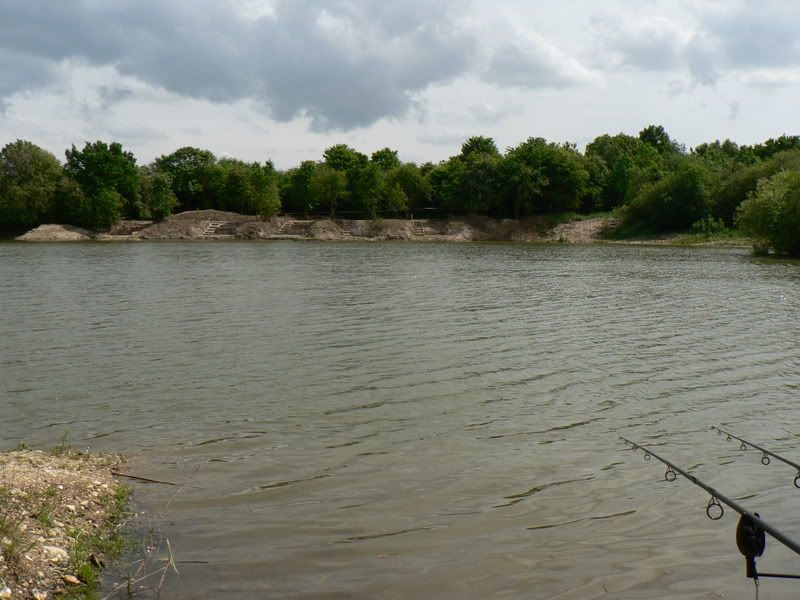
From my position, I could see across to the far side and the new swims being created during this Close Season’s work-party activities. I am always in two minds about major groundworks. On the one hand, there is an argument that any sort of mass buggering about with topography destroys the ‘naturalness’ of the place – and I recall Jim Gibbinson saying many years ago he regards the cutting of ‘dug-outs’ as vandalism (a sentiment I broadly agree with). Here at Bysing Wood though I think this sort of radical earth-work is just about justified. For a start, the far side was pretty dangerous to fish, with a steeply sloping bank and very shallow water in front which encouraged members to wade. There was also an extensive area of silt which made fishing impossible until the water level went down to a depth suitable to make fishing possible and safe. There was also the question of bone-headed members!
No matter how many times the club committee appealed to the members to have due regard for other members and not to cross their lines, cast into their water, (and generally be a confounded nuisance), the bone-heads (of which there are many) refused to take any notice and arguments and sometimes even fights arose over who could fish which bit of water. The new swims have been cunningly constructed to force anglers to fish straight out in front of them – the strategic leaving of islands by the earth-moving equipment forcing nothing less than a cast straight in front.
At the moment the far bank looks a real eyesore – but I have high hopes for the future. The next stage of work will be tree-planting and grass-seeding, and if the banks recover anything like as quickly as other areas of the lake treated similarly then the work will have been worthwhile.
It is a sad fact such measures have to be taken for the few idiots that can ruin things for the many. It’s the world we live in I’m afraid. The fact of the matter is, you don’t come to fish Bysing Wood for idyllic surroundings and pristine fish – but it is a place which is close to home and offers carp-fishing which suits me. That’s why I have been fishing the place for more than thirty years.
The fish come down the lake on the wind and strike the margins of Knicker Island; a bait cast close to the island is a good ‘banker’ here. The fish then follow the shallow water around in front of the island until they come to the reeds where they follow the fringes until it thins out, whereupon they swim through the reedbed into the ‘safe haven’ beyond (out of bounds at the moment.
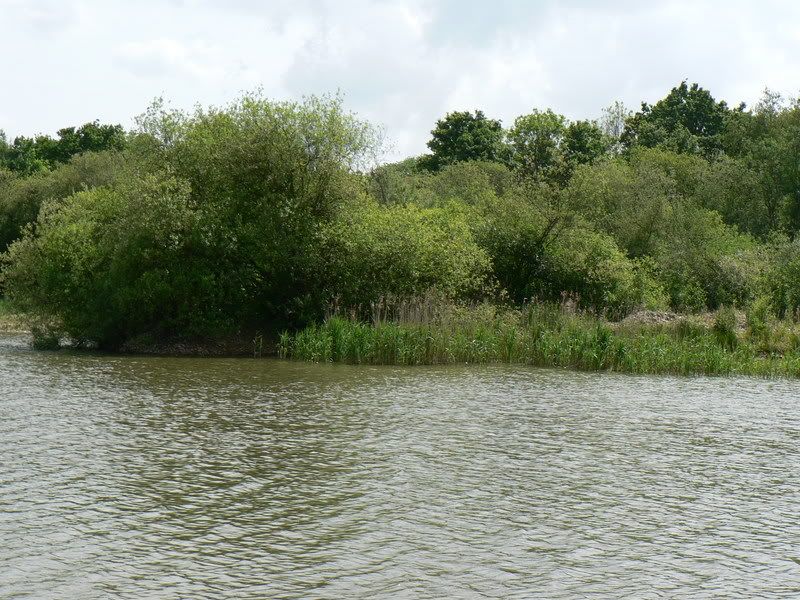
A bait positioned in ‘The Bay’ on the edge of the reeds is a very reliable spot, the only thing is, it has to be positioned within a metre or two. This requires clipping-up to get the distance without casting into the reeds, or as I do, ‘feathering’ the line on the cast to drop the bait and pva bag just short of the vegetation. I use the latter method for no other reason than I prefer to.
Can we for once and all ban this ‘carp fishing is easy’ rubbish we’ve had on the Forum recently?! Casting close enough to the reeds here without getting tangled in them requires skill and judgment – a skill and judgment beyond any novice (although with practice they’ll get the hang of it eventually).
Proximity to the reeds is vital to get a take. Too short and it’s a blank.
I started off with a stiff fluorocarbon hooklink about six inches long with a braid hair carrying a 15 mm. Cranberry and Shellfish boily. This was partnered with a ‘funnel web’ bag containing ‘Time Bomb’ pellets. No ‘freebies’ of any kind were put out. The other rod was fished off the point of the island with an identical rig and bait.
Action came virtually from the start with a couple of abortive snatches and a drop-back, neither of which I connected with. Now theoretically, a resistance rig should hook a fish every time, since the weight of the bomb and its resistance should pull the hook in. Unfortunately, the carp are unaware of this fact and frequently ‘get away with it’, either managing to shed the hook or not get hooked in the first place. Again, this is where skill and judgment comes in – you have to know what to do in a situation such as this and not fish the same old rig just because you’ve caught fish on it before. I opted to change my setup in favour of an eighteen inch length of Kryston braid to give the fish more of a chance to get the bait into their mouths properly and this once again went out with the bag of pellets.
I should think the bait had been out about twenty minutes, when I had a peculiar up-and-down sort of take and then a drop-back. I struck and was into the fish immediately which contrary to what you’d have thought didn’t make for the reeds behind it – but bolted for the bank and some snags. Winding feverishly to keep in touch, the fish still managed to get behind another bed of reeds and I had to pull hard to get it out before having a ‘slugging match’ at short range in front for ten minutes or so before being netted.
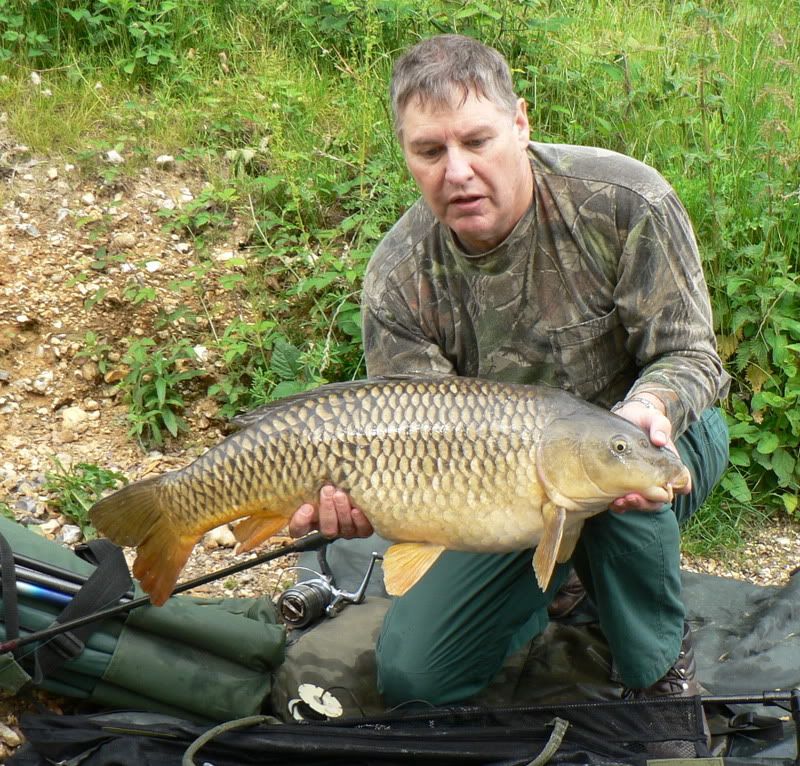
This turned out to be a common of nineteen-thirteen in fairly reasonable condition. So often are the fish caught at Bysing Wood that mouth damage and poor condition are to be expected. None of us are happy about this and all members take the greatest care to look after the fish when they are in our care. It is a fact however that the stock in the lake are now very old and a certain amount of poor condition is understandable, given the pressure. We would all like to fish for pristine fish – but must take them as they are – or fish elsewhere.
The bait was back out in the same spot – a metre or so short of the line of the reeds with a fresh boily and bag of pellets. Quite clearly the fish were following their normal patrol route as evidence was clearly visible – rolling and reed-shaking by fish moving within a foot or so of the bait. A further twenty minutes elapsed however before there was another take; again this was a strange affair, the bobbin dancing up and down like a jack-in-the-box. I was on it in a flash – but strangely missed the take. Could have been a line-bite or simply the fact the fish managed to eject the rig.
Again a new bait and bag went out to the same spot, the cast being made as a gentle lob, the line ‘feathered’ down to drop the bait just two feet short of the reeds. This time there was a longer wait before the bobbin was doing its cha-cha-cha and I hooked into a lively fish which made straight for the near-bank snags. Despite being slightly smaller than the first fish it was all over the place and led me a merry dance before being netted. A mirror this time of sixteen-five.
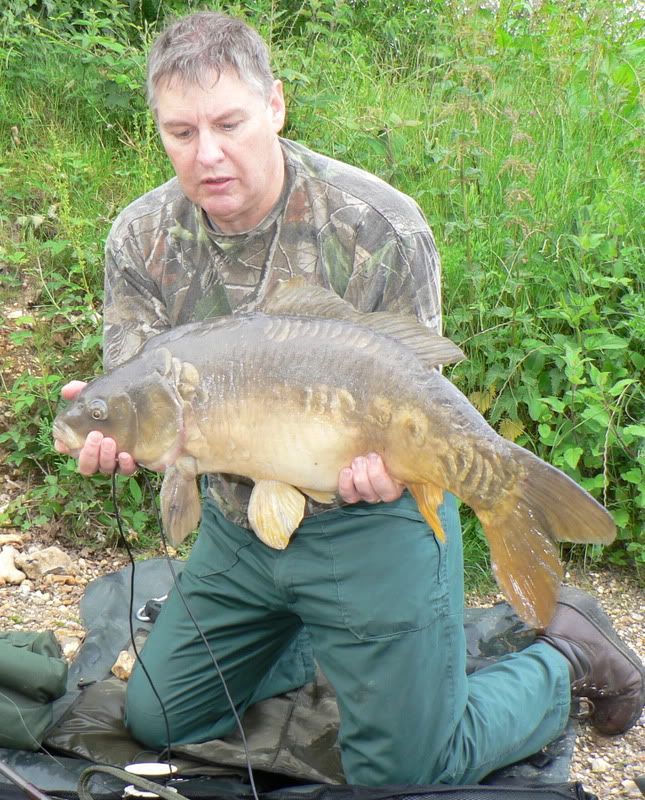
Back out with another bait and bag.
All this time, the bait off the corner of the island had remained untouched. This was usual for this swim, the bait cast against the reeds invariably producing the most fish – but after the mirror had been returned there was a steady take to this rod which drew line from the spool in typical fashion.
At first I thought it was a small fish. I got it coming in reasonably easily without too many histrionics, but when it was near the net it really went beserk and set off on a series of runs which had me all over the place. It was one of those ‘mental’ commons which just did not know when to give up. It was no stranger to the landing-net for it tore off every time it came within reach. I could see it was a big fish – another common, very long and lean. At first I had high hopes it might break my personal best for Bysing of nearly twenty-seven pounds, but when I lifted it out of the water I could see that it was one of the lake’s ‘warriors’, an old fish, bruised and battered with a very poor mouth. On the scales it weighed a creditable 23:08.
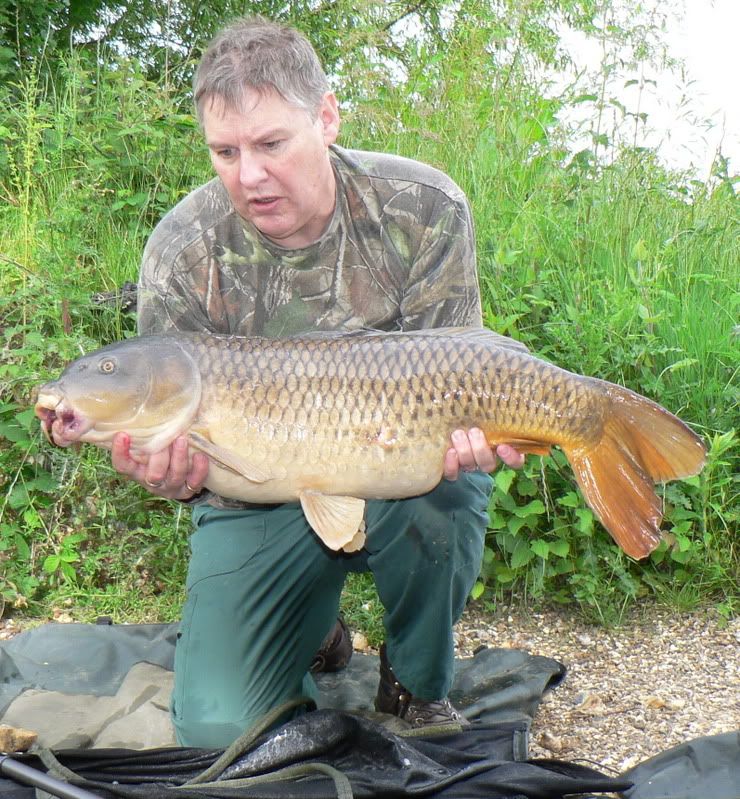
I hate catching fish with such poor mouth-damage. It almost seems a betrayal of the fish themselves – that in return for the pleasure they give – they suffer so. But there it is. The alternative is to not fish for them at all.
This turned out to be the last carp of the afternoon’s fishing. Despite several takes – all of which were Tench between three and five pounds, no more carp did I catch. There was a certain irony in the Tench; I had fished hard previously for them and not caught a single one. Here I’d caught three without even trying!
Such is fishing.




No comments:
Post a Comment